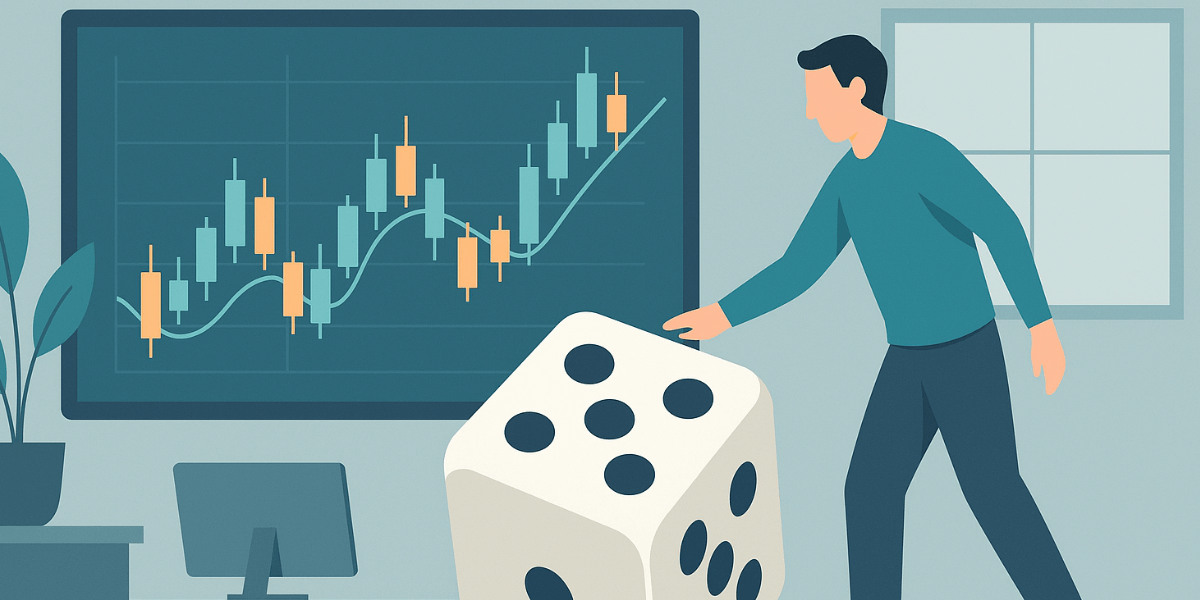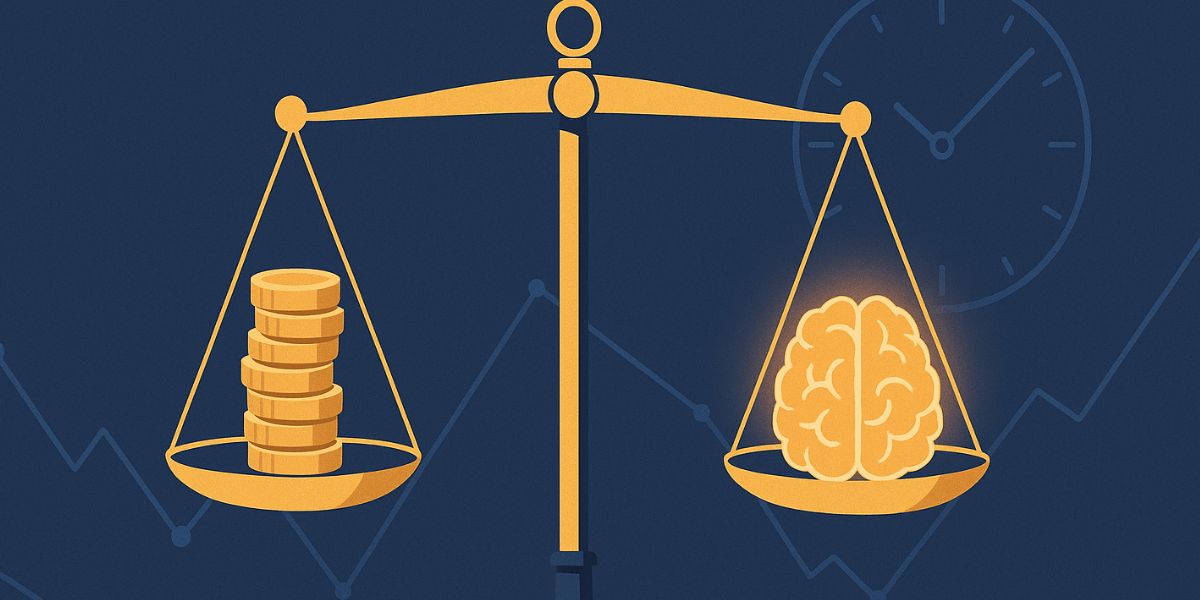In the past decade, few technologies have altered human attention as profoundly as the infinite scroll. Born from social media design and perfected by platforms like TikTok, it is a mechanism engineered to keep users in an endless state of engagement. Every swipe is a promise of novelty — another surprise, another emotion, another dopamine hit. But what happens when this same digital rhythm begins to influence traders, investors, and anyone making decisions in volatile markets?
Today’s traders no longer live in isolation from social media ecosystems. Their perceptions of success, risk, and opportunity are increasingly shaped by algorithmically curated feeds. From “finance TikTok” influencers promising outsized returns to the dopamine-driven pacing of market content, the infinite scroll effect has created a new psychological landscape for financial decision-making. This is not just about distraction — it’s about conditioning. Platforms like TikTok have rewired how traders process uncertainty, delay gratification, and evaluate risk.
This article examines the intersection of attention engineering and financial behavior. We’ll explore how social media algorithms exploit cognitive biases, how infinite scroll mechanics alter the neural architecture of risk perception, and why Gen Z traders — raised in this environment — are developing a distinct risk culture in global markets.
The Psychology of Infinite Scroll
Infinite scroll is not just a user interface; it is a behavioral loop. The design eliminates friction between one unit of content and the next, creating a seamless flow that overrides natural cognitive breaks. This design principle exploits two core aspects of human psychology: intermittent reinforcement and novelty-seeking behavior.
In psychological terms, intermittent reinforcement means rewards arrive unpredictably. This uncertainty maximizes engagement — the same principle that underpins slot machines. Users swipe because the next piece of content might be more rewarding than the last. Over time, this conditions the brain to seek novelty compulsively, not consciously. The loop is addictive because it mimics exploration, a primal survival instinct.
For traders, this matters because market data already functions on similar variable reinforcement schedules. A single profitable trade can flood the brain with dopamine, while losing trades barely satisfy the craving for recovery. When infinite scroll merges with market behavior — as it has through finance TikTok and short-form content — the boundary between learning and gambling blurs dramatically.
Algorithmic Attention and Emotional Reinforcement
TikTok’s algorithm is designed to predict and amplify user preference based on micro-behaviors — how long a video is watched, whether the user pauses, replays, or skips. Each gesture feeds a model of emotional resonance. Over time, this algorithm tailors content not for information quality, but for emotional intensity.
Finance-related TikTok feeds exploit this by prioritizing emotionally charged financial content — dramatic success stories, visual representations of wealth, and high-stimulation market predictions. The result is an emotional economy, where engagement equals exposure and attention equals belief. The more emotionally provocative the content, the more likely it is to dominate the user’s mental model of reality.
Traders consuming financial content under these conditions begin to internalize exaggerated narratives: effortless gains, instant gratification, and the normalization of extreme risk-taking. Each 15-second clip becomes a psychological anchor, distorting what “normal” trading behavior looks like. Traditional patience and process-oriented discipline feel increasingly alien.
The Dopamine Loop and Trading Behavior
Dopamine, the brain’s chemical of anticipation, plays a crucial role in both social media consumption and market speculation. TikTok’s infinite scroll and market speculation both rely on anticipatory dopamine spikes — the brief neurological reward experienced when expecting a positive outcome. The difference is that TikTok delivers these hits on a near-constant basis, conditioning users to expect instant gratification.
When applied to trading psychology, this leads to temporal compression — a reduced tolerance for waiting. Traders begin to prefer immediate, high-stimulation setups rather than long-term, low-volatility strategies. Swing and position trading decline in favor of scalping, intraday trading, and speculative crypto bets. Patience, once a hallmark of professional discipline, becomes psychologically incompatible with attention systems rewired for velocity.
From Entertainment to Identity: The Rise of “FinTok”
Financial TikTok — or “FinTok” — is not merely a niche community; it is an ecosystem that merges financial aspiration with entertainment. The platform converts risk-taking into social signaling. Displaying profit screenshots, live trade reactions, and lifestyle montages becomes part of an influencer economy built on perceived competence rather than actual performance.
This shift marks a transformation in how risk is framed. Risk is no longer something to be managed; it is something to be performed. The trader’s identity becomes inseparable from their digital persona. This performance amplifies psychological exposure: every winning trade shared online reinforces confidence beyond statistical reason, while every loss can provoke defensive or compensatory risk-taking. The public stage accelerates the emotional volatility of markets themselves.
How TikTok Shapes Risk Appetite
Empirical evidence from behavioral studies indicates that exposure to emotionally stimulating, fast-paced digital environments increases risk tolerance. Dopamine loops heighten impulsivity and reduce sensitivity to potential losses. Traders accustomed to these stimuli exhibit specific traits:
- Shortened Reward Horizons: Preference for high-frequency outcomes and low patience for delayed returns.
- Increased Sensation Seeking: Desire for excitement and novelty leads to higher trading turnover.
- Overconfidence Bias: Algorithmic validation reinforces self-belief, inflating perceived competence.
- Reduced Risk Aversion: Emotional desensitization to loss through constant stimulation.
Over time, this reshapes market behavior at a macro level. Retail trading communities coordinated through social platforms show herd-like risk exposure, as seen in meme stock rallies and cryptocurrency manias. The infinite scroll effect doesn’t just alter individuals — it synchronizes crowd psychology into algorithmic tempo.
The Neuroeconomics of Constant Stimulation
From a neuroeconomic perspective, the infinite scroll creates reward volatility — constant shifts in perceived value. Each video or post resets the baseline expectation of excitement, making less stimulating experiences feel dull. In markets, this translates to chasing volatility for its own sake. Low-variance assets or stable strategies feel psychologically unrewarding.
Moreover, repeated dopamine spikes without corresponding learning create what neuroscientists call anticipatory fatigue — a state in which reward systems lose sensitivity. Traders exposed to continuous stimulation may require ever higher levels of excitement (and risk) to achieve the same satisfaction. This mirrors addiction cycles, where the reward threshold rises over time while satisfaction decreases.
The Mirage of Competence
TikTok’s algorithm prioritizes simplicity and confidence — traits that perform well in short-form content but poorly in real trading. Simplified narratives (“Buy this coin now,” “This setup always works”) generate engagement precisely because they bypass analytical resistance. Repetition reinforces perceived truth, creating what behavioral economists call the illusory truth effect.
Viewers equate clarity with credibility. The more confident and visually polished the message, the more persuasive it becomes, regardless of factual accuracy. This creates a dangerous psychological asymmetry: low-quality information feels emotionally satisfying, while complex, probabilistic reasoning feels cognitively expensive. The human brain, wired for efficiency, defaults to the easier narrative — and risk perception follows suit.
Social Comparison and Emotional Contagion
In a constant feed of financial success stories, the most dangerous bias is not greed but envy. Social comparison triggers powerful emotional contagion. Seeing others’ exaggerated profits creates a fear of missing out (FOMO) response. Each scroll becomes a psychological reminder of being “behind.” Traders internalize unrealistic benchmarks of success, often derived from edited or selectively shared outcomes.
The social nature of the platform magnifies emotional volatility. When content creators celebrate high-risk wins, followers mimic behavior patterns subconsciously. Emotional contagion spreads through algorithms — a digital herd mentality where reward expectation outweighs risk comprehension. The market becomes not a field of rational actors but a social feedback loop of amplified emotion.
Temporal Myopia: The Shrinking of Time Horizons
Perhaps the most profound impact of infinite scroll on trading psychology is temporal myopia — the shrinking of time perspective. Continuous content consumption reduces patience for long-term outcomes. The brain begins valuing immediacy as an end in itself. In financial behavior, this translates to high-frequency trading obsession, compulsive portfolio checking, and impulsive decision-making.
Temporal myopia disrupts compounding — both in wealth and in knowledge. Learning curves flatten because sustained focus feels unnatural. Traders who once studied setups over weeks now skim headlines and mimic influencer strategies. The deep, reflective work required to develop true edge is replaced by the surface-level illusion of constant engagement.
Generational Impact: Digital Natives and Risk Normalization
Gen Z traders are the first generation fully socialized by infinite scroll environments. Their baseline tolerance for information density and stimulation is far higher than previous cohorts. While this gives them superior adaptability to fast-changing markets, it also normalizes higher risk appetites. In psychological terms, their reference point for excitement is already elevated. Moderate volatility feels uninteresting; extreme outcomes feel natural.
This cultural shift is visible in meme stock movements, crypto trading, and viral retail campaigns. The line between investing and entertainment blurs — not because traders are careless, but because emotional intensity has become part of their identity expression. In this sense, TikTok has not merely shaped risk appetite; it has gamified it.
Breaking the Loop: Restoring Reflective Decision-Making
To counteract the infinite scroll effect, traders must rebuild friction into their decision processes. This means reinstating intentional pauses, structured analysis, and clear pre-trade criteria. In cognitive terms, the goal is to reactivate System 2 thinking — deliberate, analytical reasoning — and reduce reliance on the emotional immediacy of System 1.
Strategies for Cognitive Recalibration:
- Scheduled Information Intake: Limit exposure to financial content feeds to fixed periods of the day.
- Reflection Intervals: Implement 10-minute gaps before trade execution to assess motivation — signal or stimulus?
- Digital Fasting: Periodically abstain from social media to restore baseline dopamine sensitivity.
- Data Journaling: Record decisions alongside emotional states to track correlation between content exposure and trading outcomes.
- Slow Media Diet: Replace short-form content with long-form educational material to rebuild attention span.
The Paradox of Accessibility
Social media democratized access to financial education, but accessibility without depth carries risk. Knowledge without critical context becomes performance. True financial literacy requires slowness — the capacity to think, doubt, and recalibrate. Infinite scroll rewards the opposite: speed, certainty, and stimulation. The paradox is clear — platforms designed to empower new investors often end up rewiring their risk perception toward fragility.
Conclusion
The infinite scroll effect represents a structural shift in human cognition — a rewiring of attention and risk processing through constant stimulation. For traders, the implications are profound. What began as entertainment has evolved into a behavioral conditioning mechanism that reshapes decision-making itself. The challenge is not rejecting these technologies, but understanding and mastering their influence.
In markets where attention is capital, awareness becomes an edge. Recognizing how algorithms shape perception allows traders to reclaim control of their risk appetite, rediscover patience, and rebuild reflection in an age of acceleration. The infinite scroll will not slow down — but disciplined minds can learn to step off the treadmill without missing the signal.
Frequently Asked Questions
What is the “infinite scroll” effect?
It’s a design mechanism that continuously loads new content without requiring user input, eliminating natural breaks and encouraging prolonged engagement.
How does TikTok’s design influence traders?
By delivering rapid, emotionally charged financial content that rewires attention and increases risk tolerance through dopamine-driven reinforcement.
Why does short-form content increase risk appetite?
It trains the brain to expect fast rewards, reducing patience for long-term strategies and promoting impulsive, high-frequency decision-making.
Is TikTok responsible for market irrationality?
Not directly, but its influence amplifies herd behavior and emotional contagion, which can distort collective risk assessment.
How can traders counteract infinite scroll effects?
By limiting content exposure, reintroducing structured decision processes, journaling emotional responses, and engaging with long-form educational material.
Do social media algorithms exploit cognitive biases?
Yes. Algorithms prioritize engagement by amplifying emotional and novel content, reinforcing overconfidence and FOMO in trading communities.
Can short-form platforms improve financial literacy?
Only if paired with critical thinking and independent verification. Bite-sized content can spark curiosity but not replace analytical education.
What’s the long-term risk of algorithmic exposure for traders?
Chronic overstimulation may lead to reduced attention span, higher impulsivity, and desensitization to real financial risk.
Is infinite scroll addictive?
Yes. It uses variable reward schedules that trigger dopamine responses similar to gambling, reinforcing compulsive scrolling behavior.
What’s the best antidote to algorithmic conditioning?
Mindful awareness, digital boundaries, and a focus on process-based decision-making instead of emotionally reactive content consumption.
Note: Any opinions expressed in this article are not to be considered investment advice and are solely those of the authors. Singapore Forex Club is not responsible for any financial decisions based on this article's contents. Readers may use this data for information and educational purposes only.







